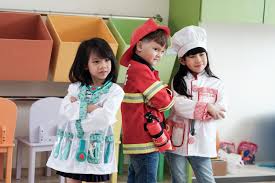Introduction and Importance in Facilitating Creativity
Humanities and Social Sciences help young children understand the world around them, developing their curiosity, empathy, and critical thinking. These subjects allow children to explore relationships, cultures, history, and geography, fostering creative and analytical thinking. By engaging with concepts such as community, environment, and different perspectives, children are encouraged to think about social issues and how they can contribute to a better world. According to the Australian Curriculum (2021), the study of humanities and social sciences in early childhood promotes the development of inquiry skills, such as questioning, investigating, and interpreting. These skills are important for nurturing creativity as children learn to think critically and imagine possibilities for the future (Howard & Mayesky, 2022).
Creativity Theories and Perspectives
In the context of humanities and social sciences, creativity is shaped by the ability to explore different viewpoints, empathize with others, and engage in reflective thinking. Vygotsky’s sociocultural theory plays an important role here, as social interactions and discussions help children understand diverse perspectives and engage in collective problem-solving. According to Stonehouse (2012), learning about society and the world through stories, role play, and discussions fosters creativity in children. They learn to navigate complex social situations, build relationships, and create new ways of thinking about themselves and the world around them. Creativity is nurtured when children are encouraged to ask questions, challenge ideas, and think about the impact they can have on society.

Resources, Materials, and Digital Technologies
In this area, resources like books, maps, and role-play materials provide opportunities for children to explore the world around them. Books with diverse stories or characters from different cultures can encourage empathy and social understanding. Digital resources, such as Google Earth or interactive geography apps, can help children explore different regions of the world and learn about various cultures and histories in a visually engaging way. Howard & Mayesky (2022) emphasize the importance of using resources that connect children to their local and global communities, helping them build an understanding of their place in the world and fostering creativity in their thinking.
Learning Experiences
0–2 years: Children explore picture books with diverse characters, helping them develop an understanding of people and cultures (Howard & Mayesky, 2022).
2–3 years: Children engage in simple role play, taking on the roles of community helpers like doctors or firefighters, helping them understand social roles and relationships (Stonehouse, 2012).
3–5 years: Children explore maps and globes to learn about different countries and cultures, sparking curiosity about the world and its diversity (Australian Curriculum, 2021).
6–8 years: Children work together to solve community problems in a simulation, developing their critical thinking, teamwork, and problem-solving skills (Howard & Mayesky, 2022).
Critical Reflection and Evaluation
The role-play activity for toddlers (2–3 years) was effective in helping them understand basic social roles and relationships, but some children struggled with turning their ideas into actions. To improve, I would provide more structured scenarios to help guide their imagination. The community problem-solving activity for children aged 6–8 was a wonderful way to encourage teamwork, but some children were hesitant to collaborate. In future activities, I would spend more time on team-building exercises beforehand to help the children work together more effectively. Allowing them to come up with their own community issues to solve would also empower them to feel more invested in the process.

